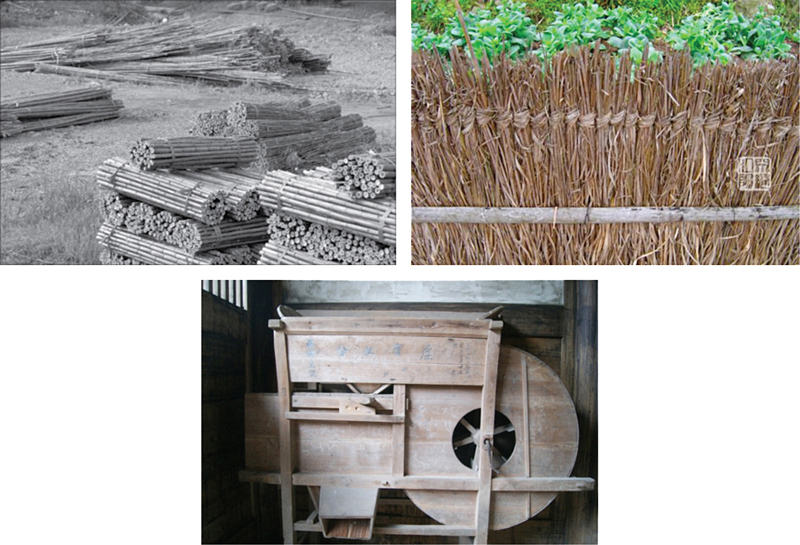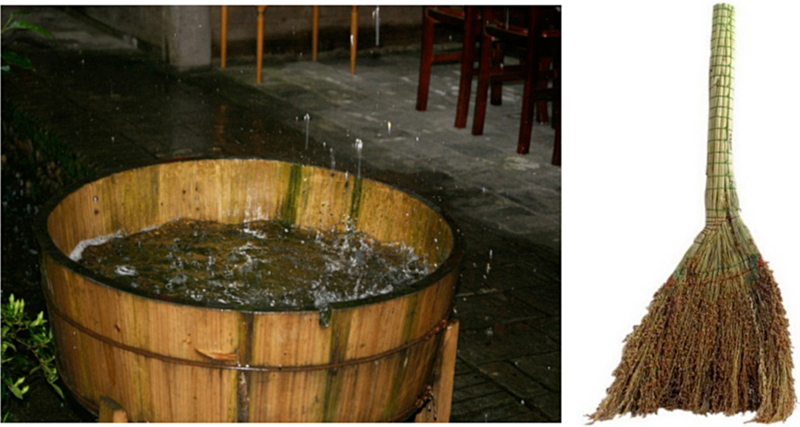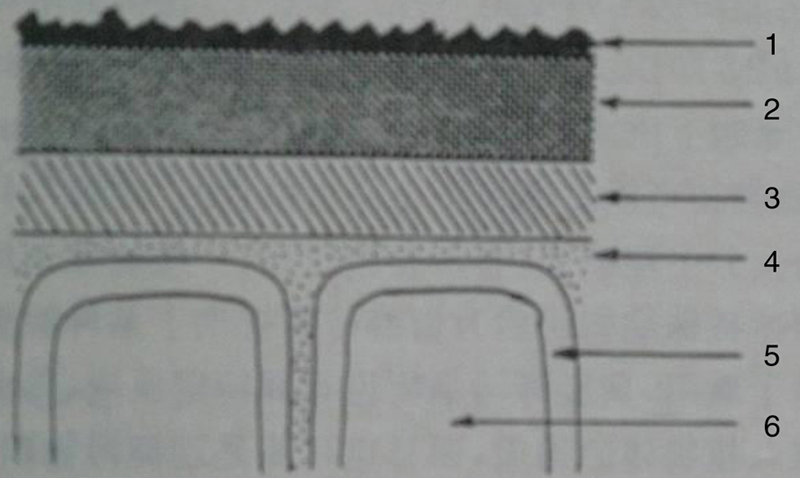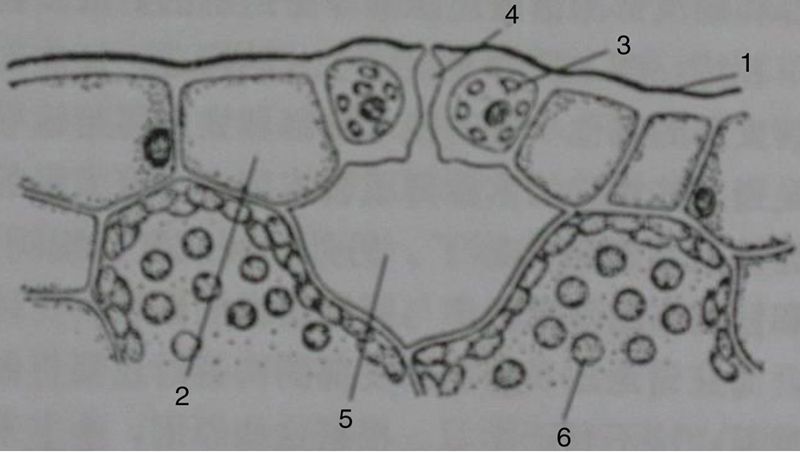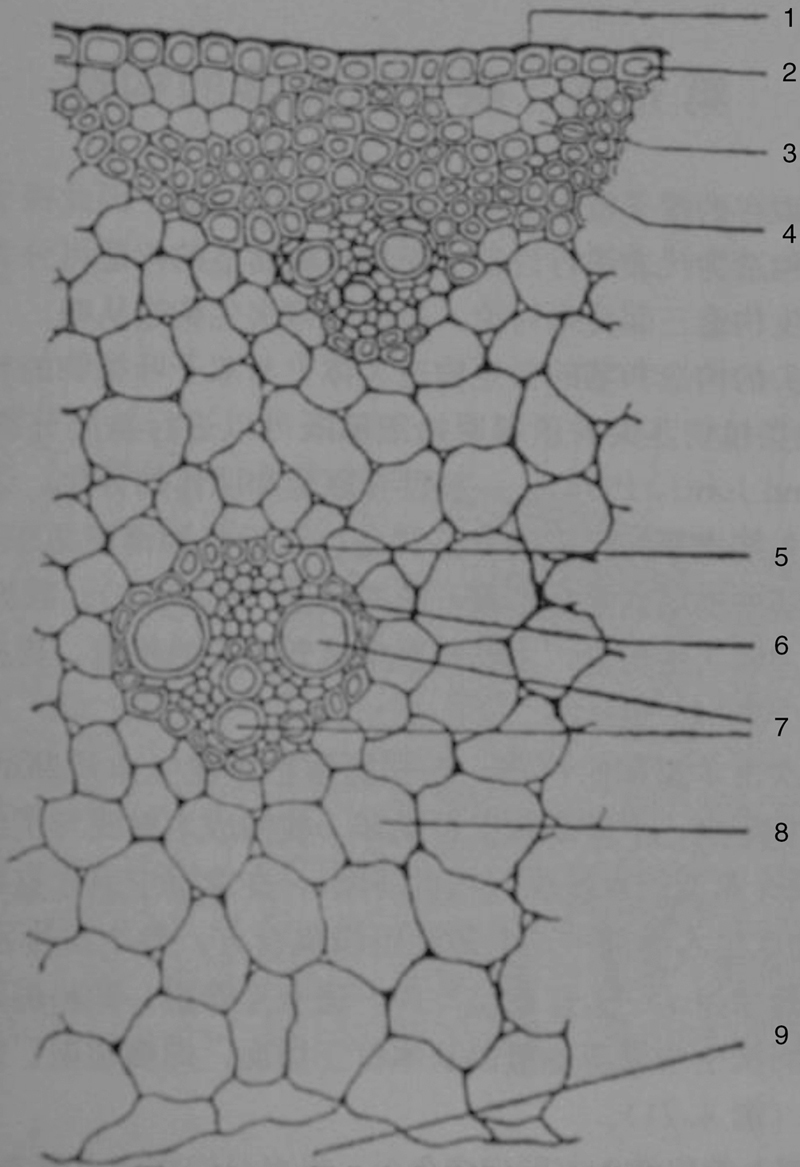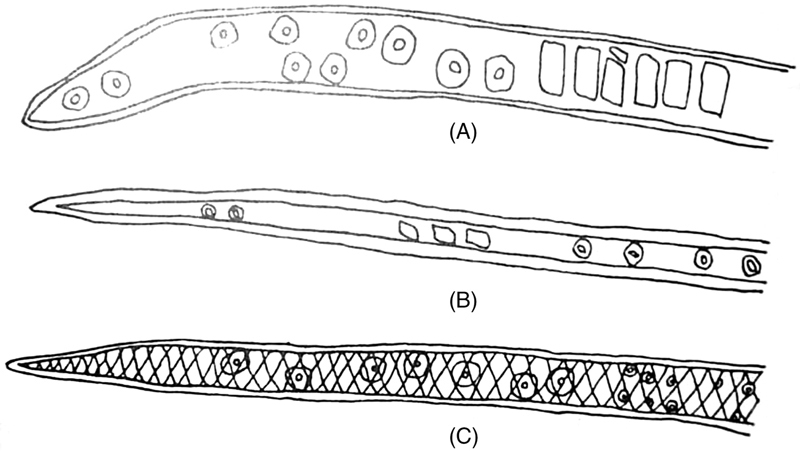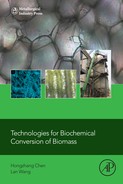References
Al-Masri, M., & Guenter, K. (1993). The effect of gamma irradiation on in vitro digestible energy of some agricultural residues. Atomic Energy Commission, Damascus (Syrian Arab Republic).
Al-Masri M, Zarkawi M. Effects of gamma irradiation on cell-wall constituents of some agricultural residues. Radiation Physics and Chemistry. 1994;44:661–663.
Aziz S, Sarkanen K. Organosolv pulping (a review). Tappi Journal. 1989;72:169–175.
Baer M, Leonhardt J, Flachowsky G, et al. Ueber die Bestrahlung von Getreidestroh mit energiereicher Strahlung (1. Mitt.). Isotopenpraxis. 1980;10:339.
Bono JJ, Gas G, Boudet AM. Pretreatment of poplar lignocellulose by gamma-ray or ozone for subsequent fungal biodegradation. Applied Microbiology and Biotechnology. 1985;22:227–234.
Cao N, Xu Q, Chen L. Xylan hydrolysis in zinc chloride solution. Applied Biochemistry and Biotechnology. 1995;51:97–104.
Cara C, Ruiz E, Ballesteros I, Negro MJ, Castro E. Enhanced enzymatic hydrolysis of olive tree wood by steam explosion and alkaline peroxide delignification. Process Biochemistry. 2006;41(2):423–429.
Carrasco F. Thermo-mechano-chemical pretreatment of wood in a process development unit. Wood Science and Technology. 1992;26:413–428.
Carrasco F, Roy C. Kinetic study of dilute-acid prehydrolysis of xylan-containing biomass. Wood Science and Technology. 1992;26:189–208.
Chen HZ. (2004). Bioprocess technology and facilities. Modern biotechnology and pharmaceutical Technology Centre of Chemical Industry Press, 2004.
Chen HZ. Bio-technology of cellulose. Beijing: Chemical industry Press; 2005.
Chen S. Enzyme engineering. Beijing: Science press; 2008: .
Chen H, Li Z. Study on ethanol extraction of steam exploded wheat straw. Forest Products Chemistry and Industry. 2000;20(3):33–39.
Chen H, Liu L. Unpolluted fractionation of wheat straw by steam explosion and ethanol extraction. Bioresource Technology. 2007;98:666–676.
Chen H, Han Y, Xu J. Simultaneous saccharification and fermentation of steam exploded wheat straw pretreated with alkaline peroxide. Process Biochemistry. 2008;43(12):1462–1466.
Chen JK, Yang J. Plant evolutionary biology. Wuhan University Press; 1994: .
Chen WS, Yu HP, Liu YX, et al. Individualization of cellulose nanofibers from wood using high-intensity ultrasonication combined with chemical pretreatments. Carbohydrate Polymers. 2011;83:1804–1811.
Choong M. What makes a leaf tough and how this affects the pattern of Castanopsis fissa leaf consumption by caterpillars. Functional Ecology. 1996;10:668–674.
Crampton E, Maynard L. The relation of cellulose and lignin content to the nutritive value of animal feeds. Journal of Nutrition. 1938;15:383–395.
Cronlund M, Powers J. Bleaching of ALCELL® organosolv pulps using conventional and nonchlorine bleaching sequences. Tappi Journal. 1992;75:189–194.
Cui Q, Zhu H, Wang D, et al. Effect on biogas yield of straw with twin-screw extruder physical-chemical combination pretreatment. Journal of Agricultural Engineering. 2011;1:280–285.
David C, Atarhouch T. Utilization of waste cellulose. Applied Biochemistry and Biotechnology. 1987;16:51–59.
Demessie ES, Hassan A, Levien KL, et al. Supercritical carbon dioxide treatment: effect on permeability of Douglas-fir heartwood. Wood and Fiber Science. 1995;27:296–300.
Deschamps FC, Ramos LP, Fontana JD. Pretreatment of sugar cane bagasse for enhanced ruminal digestion. Applied Biochemistry and Biotechnology. 1996;57:171–182.
Drapala W, Raymond L, Crampton E. Pasture studies. XXVII. The effects of maturity of the plant and its lignification and subsequent digestibility by animals as indicated by methods of plant histology. Scientific Agriculture. 1947;27:378.
Fan L, Gharpuray M, Lee Y. Cellulose hydrolysis. New York, Berlin, Heidelberg: Springer; 1987.
Fang XN, Huang W, Xia LM. Effects of inhibitors in hemicellulosic hydrolysate on xylitol production. Journal of Zhejiang University. 2005;39:547–551.
Feng W, Van Der Kooi HJ, de Swaan Arons J. Biomass conversions in subcritical and supercritical water: driving force, phase equilibria, and thermodynamic analysis. Chemical Engineering and Processing: Process Intensification. 2004;43:1459–1467.
Fischer K, Rennert S, Wilke M, et al. Möglichkeiten zur Verbesserung der Reaktivität von Chemiefaserzellstoff. Acta Polymerica. 1990;41:279–284.
Focher B, Marzetti A, Cattaneo M, et al. Effects of structural features of cotton cellulose on enzymatic hydrolysis. Journal of Applied Polymer Science. 1981;26:1989–1999.
Fu X, Chen H, Wang W. Steam exploded Kudzuvine Root to produce ethanol and flavonoids. Journal of Biotechnology. 2008;24:957–961.
Gai GS, Xu Z. Physic-chemical property changes of mateirals in ultra-fine grinding process and application. Powder Science and Technology. 1997;3:41–43.
Gordon AH, Lomax JA, Dalgarno K, et al. Preparation and composition of mesophyll, epidermis and fibre cell walls from leaves of perennial ryegrass (Lolium perenne) and Italian ryegrass (Lolium multiflorum). Journal of The Science of Food and Agriculture. 1985;36:509–519.
Gralak M, Krasicka B, Kulasek G. The effect of gamma radiation on digestibility of cane bagasse. 20th Annual Meeting of the European Society of Nuclear Methods in Agriculture (ESNA); 1989 Wagenninger, The Netherlands. 63.
Grous WR, Converse AO, Grethlein HE. Effect of steam explosion pretreatment on pore size and enzymatic hydrolysis of poplar. Enzyme and Microbial Technology. 1986;8:274–280.
Hatakka AI. Pretreatment of wheat straw by white-rot fungi for enzymic saccharification of cellulose. Applied Microbiology and Biotechnology. 1983;18:350–357.
He JK, Li QJ. Forest chemical industry book. Beijing: China Forestry Publishing House; 2001.
Oxford: Blackwell Pub. (2009). Biomass recalcitrance: deconstructing the plant cell wall for bioenergy.
Holtzapple MT, Jun JH, Ashok G, et al. The ammonia freeze explosion (AFEX) process. Applied Biochemistry and Biotechnology. 1991;28:59–74.
Hongzhang C, Liying L. Unpolluted fractionation of wheat straw by steam explosion and ethanol extraction. Bioresource Technology. 2007;98:666–676.
Hui_xing Y. Theory and Practice of Ultra-fine Pulverization and Its Impact on Food Industries. Packaging and Food Machinery. 2001;1:001.
Chen, H., & Fu, X. (2011) A method and equipment for combing and fractionation of biomass fibers. Chinese Patent, CN 201110233853.6, 2011.
Chen, H., Liu, J., Li, C., et al. (2003). A degumming method for steam exploded mariguana. Chinese Patent, CN 1400338, 2003.
Chen, H., Peng, X., & Zhang, Z. (2009). A method to prepare paper pulp using steam exploded and degummed stems and barks of paper mulberry. Chinese Patent, CN 101487195 2009.
Chen, H., Wang, Y., & Chen, G. (2011). A noverl technology to prepare plant oil using steam explosion-solvent method. CN102154054A, 2011.
Jimenez L, Perez I, Lopez F, et al. Ethanol-acetone pulping of wheat straw. Influence of the cooking and the beating of the pulps on the properties of the resulting paper sheets. Bioresource Technology. 2002;83:139–143.
Jin SY, Chen HZ. Superfine grinding of steam-exploded rice straw and its enzymatic hydrolysis. Biochemical Engineering Journal. 2006;30:225–230.
Jin S, Chen H. Fractionation of fibrous fraction from steam-exploded rice straw. Process Biochemistry. 2007;42:188–192.
Jouany JP. Rumen microbial metabolism and ruminant digestion. Livestock Production Science. 1995;44(3):284.
Kawamori M, Morikawa Y, Ado Y, et al. Production of cellulases from alkali-treated bagasse in Trichoderma reesei. Applied Microbiology and Biotechnology. 1986;24:454–458.
Kim KH, Hong J. Supercritical CO 2 pretreatment of lignocellulose enhances enzymatic cellulose hydrolysis. Bioresource Technology. 2001;77:139–144.
Kim M-J, Yook H-S, Byun M-W. Effects of gamma irradiation on microbial contamination and extraction yields of Korean medicinal herbs. Radiation Physics and Chemistry. 2000;57:55–58.
Kiran E, Balkan H. High-pressure extraction and delignification of red spruce with binary and ternary mixtures of acetic acid, water, and supercritical carbon dioxide. The Journal of Supercritical Fluids. 1994;7:75–86.
Klyosov A. Enzymatic conversion of cellulosic materials to sugars and alcohol. Applied Biochemistry and Biotechnology. 1986;12:249–300.
Kootstra AMJ, Beeftink HH, Scott EL, et al. Comparison of dilute mineral and organic acid pretreatment for enzymatic hydrolysis of wheat straw. Biochemical Engineering Journal. 2009;46:126–131.
Kumar R, Wyman CE. Effects of cellulase and xylanase enzymes on the deconstruction of solids from pretreatment of poplar by leading technologies. Biotechnology Progress. 2009;25:302–314.
Kume T, Ito H, Ishigaki I, et al. Effect of gamma irradiation on microorganisms and components in empty fruit bunch and palm press fibre of oil palm wastes. Journal of The Science of Food and Agriculture. 1990;52:147–157.
Laser M, Schulman D, Allen SG, et al. A comparison of liquid hot water and steam pretreatments of sugar cane bagasse for bioconversion to ethanol. Bioresource Technology. 2002;81:33–44.
Leonhardt J, Baer M, Hennig A, et al. Gamma and electron radiation effects on agricultural by-products with high fibre content. Nuclear techniques for assessing and improving ruminant feeds. 1983.
Li XB, Wu Q. Plant cell wall. Beijing: Peking University Press; 1993.
Lipinsky E, Kresovich S. Sugar crops as a solar energy converter. Cellular and Molecular Life Sciences. 1982;38:13–18.
Liu M. Seed plant anatomy introduction. Beijing: Science Press; 2010: .
Liu LY, Chen HZ. Enzymatic hydrolysis of cellulose materials treated with ionic liquid [BMIM] Cl. Chinese Science Bulletin. 2006;51:2432–2436.
Lora JH, Aziz S. Organosolv pulping: a versatile approach to wood refining. Tappi. 1985;68(8).
Machado ASR, Sardinha RM, de Azevedo EG, et al. High-pressure delignification of eucalyptus wood by 1,4-dioxane-CO2 mixtures. The Journal of Supercritical Fluids. 1994;7:87–92.
Maekawa E. On an available pretreatment for the enzymatic saccharification of lignocellulosic materials. Wood Science and Technology. 1996;30:133–139.
Malek MA, Chowdhury NA, Matsuhashi S, et al. Radiation and fermentation treatment of cellulosic wastes. Mycoscience. 1994;35:95–98.
Mei-yun Z. Features of silvergrass auto-catalyzed ethanol pulping. Transactions of China Pulp and Paper. 2004;2:003.
Mok WSL, Antal Jr MJ. Uncatalyzed solvolysis of whole biomass hemicellulose by hot compressed liquid water. Industrial & Engineering Chemistry Research. 1992;31:1157–1161.
Mosier N, Wyman C, Dale B, et al. Features of promising technologies for pretreatment of lignocellulosic biomass. Bioresource Technology. 2005;96:673–686.
Ooshima H, Aso K, Harano Y, et al. Microwave treatment of cellulosic materials for their enzymatic hydrolysis. Biotechnology Letters. 1984;6:289–294.
Palmqvist EA, Hahn-Hägerdal B. Fermentation of lignocellulosic hydrolysates. II: inhibitors and mechanisms of inhibition. Bioresource Technology. 2000;74:25–33.
Pan ST, Wang KX, Liu Q. Study on physical and chemical properties of different sized rice powder. Food Science. 2004;25:58–62.
Pan XJ, Arato C, Gilkes N, et al. Biorefining of softwoods using ethanol organosolv pulping: preliminary evaluation of process streams for manufacture of fuel-grade ethanol and co-products. Biotechnology and Bioengineering. 2005;90:473–481.
Ping W, Xiujin L, Hairong Y, et al. Anaerobic biogasification performance of corn stalk pretreated by a combination of green oxygen and NaOH. Journal of Beijing University of Chemical Technology (Natural Science). 2010;37:115–118.
Ren Q, Wu J, Zhang J, et al. Synthesis of 1-Allyl,3-methylimidazolium-based room-temperature ionic liquid and preliminary study of its dissolving cellulose. Acta Polymerica Sinica. 2003;1:448–451.
Reyes T, Bandyopadhyay S, McCoy B. Extraction of lignin from wood with supercritical alcohols. The Journal of Supercritical Fluids. 1989;2:80–84.
Ritter DC, Campbell AG. Supercritical carbon dioxide extraction of southern pine and ponderosa pine. Wood and Fiber Science. 1991;23:98–113.
Sandev, S., & Karaivanov, I. (1979). The composition and digestibility of irradiated roughage. Decontamination of Animal Feeds by Irradiation. International Atomic Energy Agency, Vienna (Austria) Advisory Group Meeting on Radiation Treatment of Animal Feeds; Sofia (Bulgaria); 17–21 Oct. 1977. pp. 83–87.
Sasaki M, Kabyemela B, Malaluan R, et al. Cellulose hydrolysis in subcritical and supercritical water. The Journal of Supercritical Fluids. 1998;13:261–268.
Sasaki M, Fang Z, Fukushima Y, et al. Dissolution and hydrolysis of cellulose in subcritical and supercritical water. Industrial & Engineering Chemistry Research. 2000;39:2883–2890.
Schultz DJ, Craig R, Cox-Foster DL, et al. RNA isolation from recalcitrant plant tissue. Plant Molecular Biology Reporter. 1994;12:310–316.
Sheng Y, Liu CB, Tu MJ. Applied adtantage and outlook of modern production for Chinese herbal medicine using superfine communication technique. Powder Science and Technology. 2003;9:28–31.
Shengdong Z, Ziniu Y, Yuanxin W, et al. Enhancing enzymatic hydrolysis of rice straw by microwave pretreatment. Chemical Engineering Communications. 2005;192:1559–1566.
Shi J, Chinn MS, Sharma-Shivappa RR. Microbial pretreatment of cotton stalks by solid state cultivation of Phanerochaete chrysosporium. Bioresource Technology. 2008;99:6556–6564.
Shi J, Sharma-Shivappa RR, Chinn M, et al. Effect of microbial pretreatment on enzymatic hydrolysis and fermentation of cotton stalks for ethanol production. Biomass and bioenergy. 2009;33:88–96.
Singh K, Honig H, Wermke M, et al. Fermentation pattern and changes in cell wall constituents of straw-forage silages, straws and partners during storage. Animal Feed Science and Technology. 1996;61:137–153.
Stepanik T, Rajagopal S, Ewing D, et al. Electron-processing technology: A promising application for the viscose industry. Radiation Physics and Chemistry. 1998;52:505–509.
Stockburger P. An overview of near-commercial and commercial solvent-based pulping processes. Tappi Journal. 1993;76:6.
Sun F, Chen HZ. Organosolv pretreatment by crude glycerol from oleochemicals industry for enzymatic hydrolysis of wheat straw. Bioresource Technology. 2008;99:5474–5479.
Sun J, Chen L, Wang H. Research progress on the production of fuel ethanol by lignocellulose. Renewable Energy. 2003;6:004.
Swatloski RP, Spear SK, Holbrey JD, et al. Dissolution of cellose with ionic liquids. Journal of the American Chemical Society. 2002;124:4974–4975.
Taniguchi M, Kometani Y, Tanaka M, et al. Production of single-cell protein from enzymatic hydrolyzate of rice straw. Applied Microbiology and Biotechnology. 1982;14:74–80.
Taniguchi M, Tanaka M, Matsuno R, et al. Evaluation of chemical pretreatment for enzymatic solubilization of rice straw. Applied Microbiology and Biotechnology. 1982;14:35–39.
Torget R, Teh-An H. Two-temperature dilute-acid prehydrolysis of hardwood xylan using a percolation process. Applied Biochemistry and Biotechnology. 1994;45:5–22.
van Walsum GP, Allen SG, Spencer MJ, et al. Conversion of lignocellulosics pretreated with liquid hot water to ethanol. Applied Biochemistry and Biotechnology. 1996;57:157–170.
van Wordragen MF, Dons HJ. Agrobacterium tumefaciens-mediated transformation of recalcitrant crops. Plant Molecular Biology Reporter. 1992;10:12–36.
Varga E, Schmidt AS, Réczey K, et al. Pretreatment of corn stover using wet oxidation to enhance enzymatic digestibility. Applied Biochemistry and Biotechnology. 2003;104:37–50.
Wang L, Chen H. Increased fermentability of enzymatically hydrolyzed steam-exploded corn stover for butanol production by removal of fermentation inhibitors. Process Biochemistry. 2011;46:604–607.
Wang H-x, Li G-z, Yu D-m, et al. Barrier effect of litter layer on natural regeneration of forests: a review. Chinese Journal of Ecology. 2008;27:83–88.
Wang YW, Wang YJ, Zhang WJ. Research advances in fermentation inhibitors in biomass hydrolysate pretreated by diluted acid. Liquor-making Science & Technology. 2009;10:91–94.
Wayman M, Parekh SR. SO2 prehydrolysis for high yield ethanol production from biomass. Applied Biochemistry and Biotechnology. 1988;17:33–43.
Weil J, Sarikaya A, Rau S-L, et al. Pretreatment of yellow poplar sawdust by pressure cooking in water. Applied Biochemistry and Biotechnology. 1997;68:21–40.
Weil J, Brewer M, Hendrickson R, et al. Continuous pH monitoring during pretreatment of yellow poplar wood sawdust by pressure cooking in water. Applied Biochemistry and Biotechnology. 1998;70(1):99–111.
Wright E. Text-book of botany, morphological and physiological. Nature. 1883;27:263–264.
Wyman CE, Goodman BJ. Biotechnology for production of fuels, chemicals, and materials from biomass. Applied Biochemistry and Biotechnology. 1993;39:41–59.
Yuan Y, Chen H. Application of steam explosion in extraction of ephedrine. Journal of China Pharmaceutical University. 2005;36:414–416.
Zadra il F. The conversion of straw into feed by basidiomycetes. Applied Microbiology and Biotechnology. 1977;4:273–281.
Zhan HY. Pulp principles and engineering. Beijing: China Light Industry Press; 2011: .
Zhang YH, Liu HN. Ultrafine grinding technology and its applications in the pharmaceutical Industry. Journal of Jiangxi College of Traditional Chinese Medicine. 2002;14:57–58.
Zheng Y, Lin H-M, Wen J, et al. Supercritical carbon dioxide explosion as a pretreatment for cellulose hydrolysis. Biotechnology Letters. 1995;17:845–850.
Zhu S, Wu Y, Yu Z, et al. Simultaneous saccharification and fermentation of microwave/alkali pre-treated rice straw to ethanol. Biosystems Engineering. 2005;92:229–235.
Zhu SD, Wu YX, Yu ZN, et al. Pretreatment by microwave/alkali of rice straw and its enzymic hydrolysis. Process Biochemistry. 2005;40:3082–3086.
Zhu S, Wu Y, Yu Z, et al. Comparison of three microwave/chemical pretreatment processes for enzymatic hydrolysis of rice straw. Biosystems Engineering. 2006;93:279–283.

